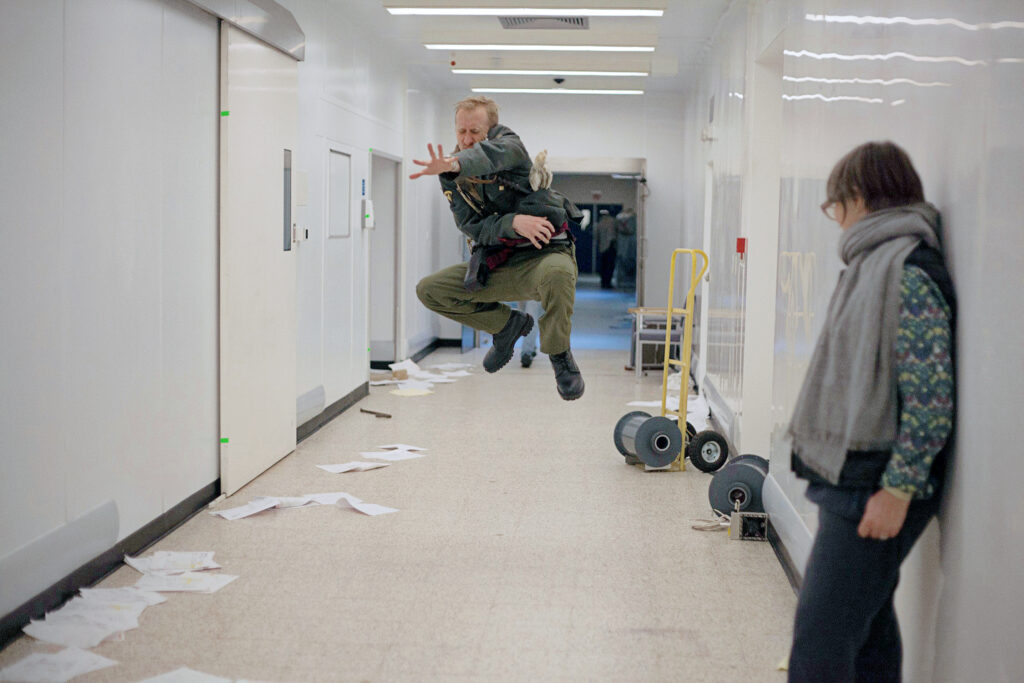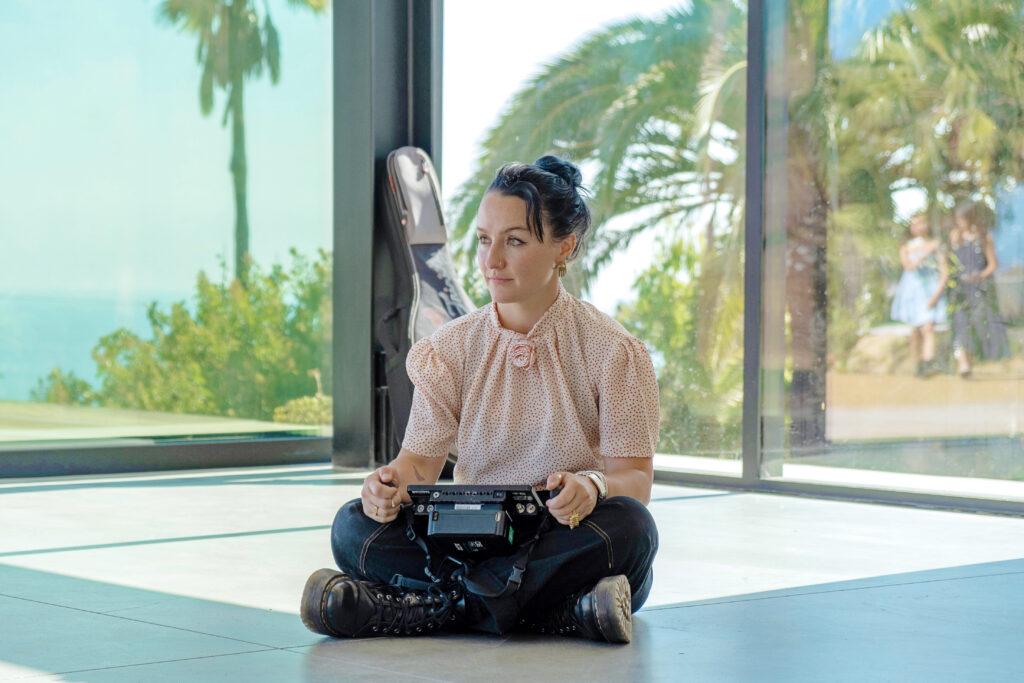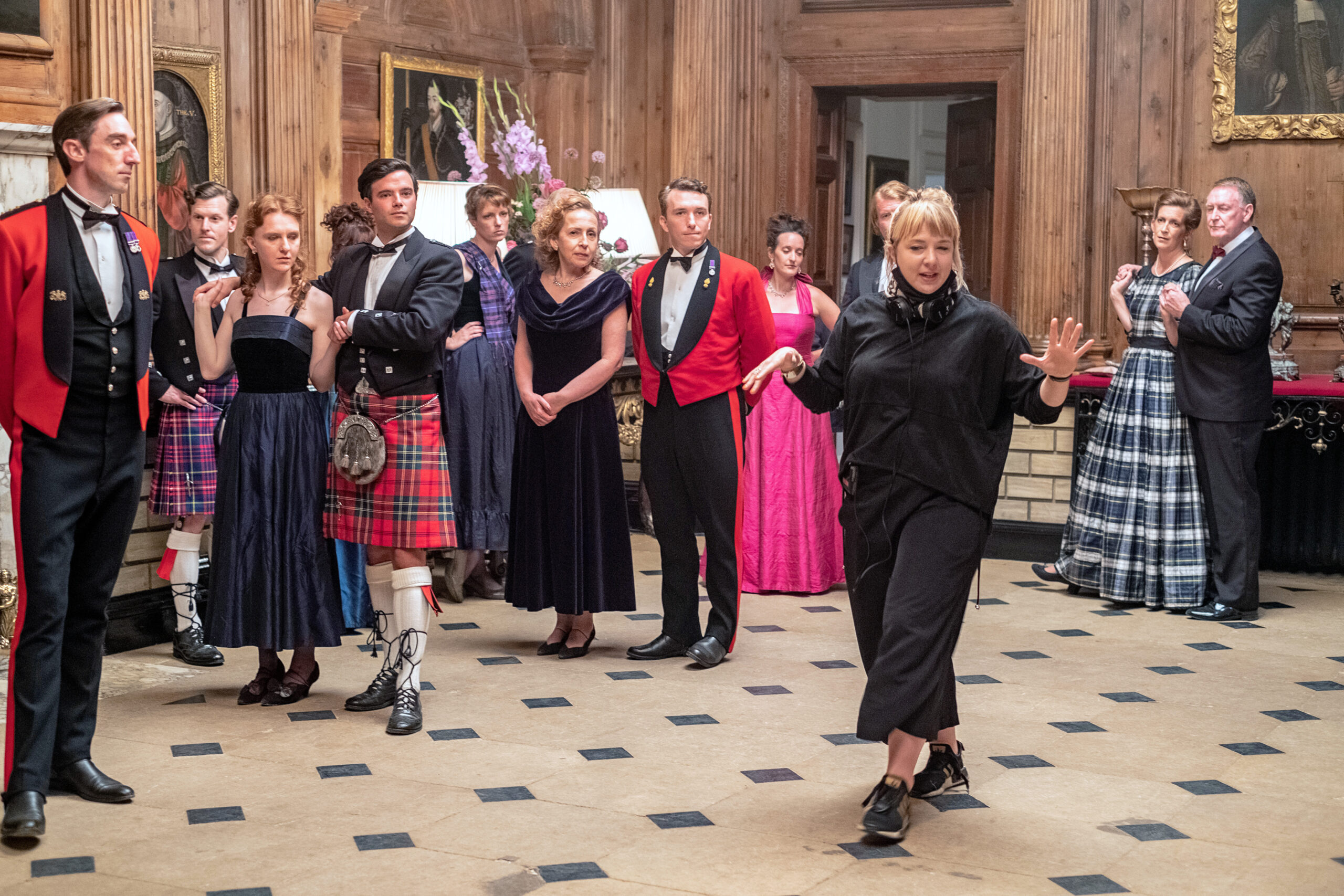3 Dance Artists on What It Takes to Be an On-Set Movement Director
“I’ve always been interested in why people move the way that they do,” says Polly Bennett, who has turned that fascination into a career as a movement director and choreographer for film, television, and theater. Bennett got her start as a movement director by having the right skills at the right moment: On a video shoot where she was working as a production assistant, a model was struggling to execute what was being asked. “I stepped in and was able to communicate movement differently,” says Bennett, who referenced the way a horse trots in order to help the model walk in time with the music.
What Bennett accomplished on that shoot is exactly what a movement director is charged with doing: explaining how to move or pose in creative ways that both dancers and nondancers can understand. “The idea of a choreographer can be quite intimidating” for performers without a dance background, she explains—hence the title of movement director.
Because being a movement director requires a deep understanding of how the body moves, dancers, choreographers, and teachers are uniquely set up for success in the field. Three experienced movement directors share their insights on how they got started, what’s involved in the role, and the challenges they face.
First Moves
Caroline Pope, a London-based movement director and choreographer, has been coaching performers for 30 years. She got her start while working as a dancer with David Bowie on the ballroom scene in the 1986 film Labyrinth. That experience sparked a love for choreographing and movement coaching, and she later started to lead movement courses for actors. Since then, she has worked on blockbuster films like The Hustle and the Doctor Who series.
For Monika Felice Smith, a choreographer and movement director based in the U.S., social media paved the way to a career as a movement director. Photographer and director Carlos Serrao came across her Instagram page and sent her a DM to see if she was interested in collaborating on print work. He hired her for a Fabletics shoot with Kelly Rowland as her first-ever movement directing gig. “I was really appreciative of that moment,” says Smith, who has since worked with Serrao and other directors on shoots for Nike, Lululemon, Oculus, and more.

A Variety of Venues
Movement directors are “the glue to the set,” says Smith, who works closely with the director, creative director, cinematographer, and producers to understand their vision, and then helps to articulate it to the talent. The work extends in interesting ways, such as helping public figures understand body language, models pose for activewear campaigns, actors move using historically accurate etiquette, and much more.
For film and television projects, Bennett researches the time and place in which the project is set before discussing movement, so the actors can immerse themselves in that world. When Bennett worked with Austin Butler on the 2022 film Elvis, she first helped him understand the music and dancing of the 1950s and how it changed in the ’60s and ’70s. Bennett has also worked on the Netflix series “The Crown,” helping the actors break down the body language of the royal family to create authentic representations of their characters. “The directors understand that movement work is really important to these actors, because it takes away the fear of impersonation,” says Bennett, who uses historical footage to guide imagined responses for how the characters might have done things there aren’t recordings of, like eating breakfast. For Pope, preparing for films or television projects includes reading biographies and history books. She used this type of research to help Domhnall Gleeson portray the PTSD that soldiers suffered as a result of World War I in the film Goodbye Christopher Robin.
Movement directors work on plays and concerts as well. Pope has coached actors on performances of A Doll’s House and the opera Macbeth, and Bennett once helped a group of performers in The Tempest physicalize being in a shipwreck. Smith has collaborated with musical artists, such as Panic! At The Disco and Olivia Rodrigo, to add movement to concert performances. “I give [Rodrigo] bullet points to hit throughout the song and she hits those, along with adding her own personality,” says Smith, who often provides musicians a set of movements to pull from instead of tricky choreography.
For commercials and print ads, having a movement director on set can help models feel more comfortable and confident. Smith often starts by finding out if the model has a dance or sports background. On a Fabletics shoot for medical scrubs, Smith discovered that one model had played basketball, so asked him to mime dribbling a ball to help the shots look natural. “If models are newer to the game, I like to incorporate improvisational prompts,” she says, one time using Gaga cues for a model who had taken those classes.
Beyond entertainment, Bennett works with politicians to refine how they present themselves to the public. “The subtleties of body language and the psychology of what they do has an impact on the people watching them,” she says.

Receiving Recognition
Movement directors face similar challenges to choreographers in receiving credit and fair pay. Sometimes they are absent from the credits or “sometimes the team doesn’t want anyone to know that the artist worked with someone to help with their movement,” says Smith, who, along with Pope, has had her name left off projects. Smith is looking forward to seeing the impact of the Choreographers Guild on movement directing, and, similarly, Pope is hopeful for the success of the newly formed Movement Directors’ Association in the UK.
“I find that a big part of my existence as a movement person is campaigning for the future of movement people,” says Bennett, who works to raise awareness of the impact movement directors have on storytelling. She encourages those interested in the career to think about their personal approach to movement and write a description of how that work can be beneficial before approaching theaters, directors, and businesses. “If you’re able to articulate what you can do, the jobs are there.”





